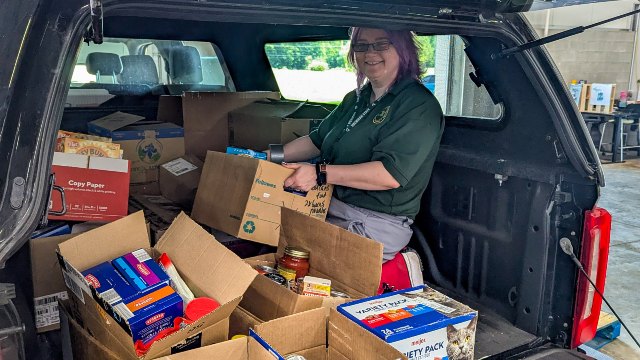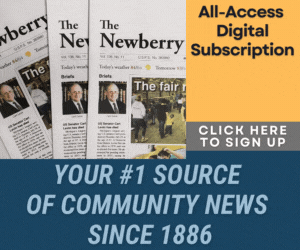By Carly Kalkauski Hunters Feeding Michigan student assistant
Michigan Department of Natural Resources
Hunger isn’t always obvious.
It can show up as the quiet gnaw in a child’s stomach before school, or in the concern of a parent while sitting at the kitchen table making the decision between paying for groceries or rent or the suffering of anyone lying in bed wishing dinner was able to stave off the ache of not enough.
This grim reality plagues over a million Michiganders.
Almost one in five children in Michigan struggle with hunger. It’s a problem that cuts across rural towns, urban neighborhoods and suburban streets.
One of the ways that the Michigan Department of Natural Resources is working to help address this problem is through a program called Hunters Feeding Michigan.
The program bridges the gap between hunters, who donate deer they harvest, and charities that can use deer meat, or venison, from those donations to help people in need.
Hunters Feeding Michigan follows a three-step process.
First, hunter use a license to harvest a deer and decide to donate the deer to the program to help their neighbors.
Second, they bring the deer to a participating processor, listed at Michigan.gov/HuntersFeedingMichigan, and the processor takes it from there – no processing fee to worry about.
Third, after the deer meat is processed into ground venison, the program’s partner, Food Bank Council of Michigan, uses the Feeding America network to distribute the venison to food banks, pantries, shelters, soup kitchens and other agencies across the state.
It’s a system that has helped bring in 2.8 million servings of clean protein to those in need since 2005, and that number is only getting bigger each year thanks to the support of donors. The program is primarily donation-funded in its current state, making it reliant on those who donate deer and money to function as it does.
If you’d like to support the program, visit the Hunters Feeding Michigan webpage and find out where you can either donate deer or donate funds, share the information with a hunter you know with an often-full freezer, or let friends and family know about the program.
After all, hunters have reported that increasing awareness about programs like Hunters Feeding Michigan would amplify program participation, so every bit of reach helps.
You can also support the program by buying Hunters Feeding Michigan products from Great Lakes Proud – including t-shirts, hats, a hoodie and a tumbler – and Deer Camp Coffee’s Donor Doe and Traditions coffees. A portion of the proceeds from these products benefits Hunters Feeding Michigan.
Hunters Feeding Michigan’s name may be new – the DNR adopted the name in the last year – but the program’s existence is not.
Legislation was passed in 2005 requiring the DNR to start a wild game donation program. It was a bit of a slow start at first, with the program becoming fully operational in 2007, but now that Hunters Feeding Michigan has the Food Bank Council of Michigan as a partner, the program is quickly picking up steam.
Since Oct. 1, 2024, the program has processed almost 500,000 servings of venison. That’s about 18% of its lifetime donations in just the last year, showing its impact is only growing by the day.
Many hunters see the program as one way they can connect with and contribute to their communities. Plus, hunters are the original conservationists – without them, it feels like the state would be more deer than people.
Hunting has been shown to increase a person’s love for the environment, respect for wildlife and a desire to protect nature, according to a 2024 study published in Nature Sustainability.
Once hunters donate a deer they’ve harvested to the program, that’s where the processor – the next link that makes Hunters Feeding Michigan possible – comes in. Being able to donate deer and not having to pay for processing can inspire folks to harvest more deer.
Instead of processors having to store excess venison within their own square footage, the program can provide extra space for donations.
From there, Food Bank Council of Michigan gets the venison to one of its agencies that helps feed those in need.
That’s the final link in the chain for Hunters Feeding Michigan.
The DNR’s partnership with Food Bank Council of Michigan, which started in 2024, has been a boon for both organizations. With the council’s ability to distribute to all 83 counties in Michigan through its unparalleled network of agencies, which includes food banks, pantries, shelters, soup kitchens and other charities that distribute food, the program is reaching more Michiganders than ever before.
Meanwhile, increased venison donations keep costs down for food banks.
According to Food Bank Council of Michigan’s agriculture business specialist, Garret Zuver, the organization spent an average of $3.70 per pound on proteins such as pork, sausage, turkey and beef products.
In the approximately eight-month span between Oct. 24, 2024, and June 20, 2025, Food Bank Council of Michigan purchased almost 4.5 million pounds of protein products. That means they spend over a million dollars per month on protein products.
While venison donations are the core of what Hunters Feeding Michigan does, the program is continuing to expand its reach in helping those in need. This past summer, I had the pleasure of coordinating the inaugural Hunters Feeding Michigan nonperishable food drive.
For a week in July, people from across the state stopped into their local DNR customer service centers to donate food. There was even an internal food drive at the Deborah A. Stabenow building in Lansing, where many DNR staffers and their colleagues in other state agencies work.
By the end of that week, over 1,400 pounds of food were donated.
Deploying refrigerated trailers and hosting nonperishable food drives are just the beginning of Hunters Feeding Michigan’s current chapter.
At the end of the day, every effort to help those in need makes a difference. And the work that Hunters Feeding Michigan does is made possible by the support of individuals like yourself.











